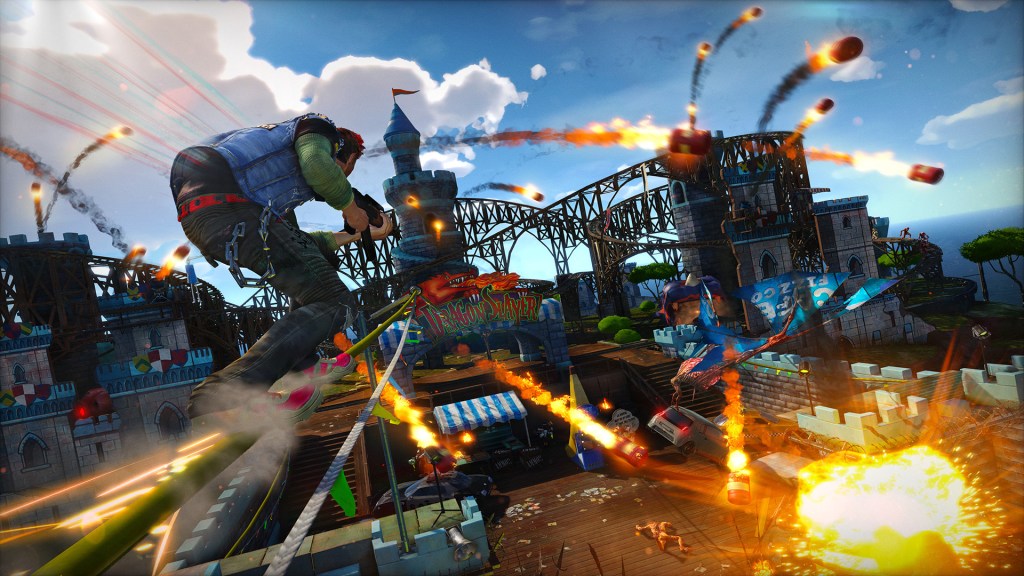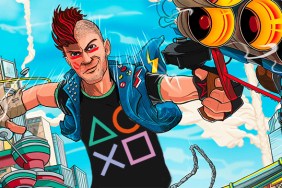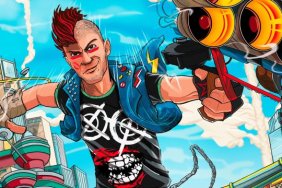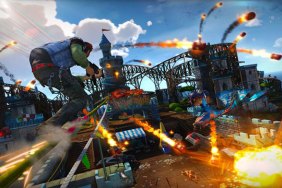At a recent Xbox One event in San Francisco, I got my first chance to go hands-on with Sunset Overdrive which will bring Insomniac's unique weapon and world design to the platform this Fall. After creating my character, meeting a few interesting faces, and trying my hand at a wave-based defense mode, I took off around the city and generally flattened the Overcharge drinkers with exploding teddy bears and a shotgun with definitive testicles on it.
Then I got to talk to the designers behind the game, Ted Price and Drew Murray. We discussed Sunset Overdrive's origins and how the team is prepping for launch. Don't forget to read our full preview here.
GameRevolution: What was the most direct inspiration for the grinding and traversal gameplay?
Drew Murray: I think the designer who really pushed for all the traversal is a big fan of Jet Grind Radio, and Marcus Smith and I are big fans of Tony Hawk and some mix in between those two is where that inspiration came from originally.
GR: The characters stick so well to different surfaces, in play-testing is it difficult to get that mechanic down and make it satisfying right away?
Drew Murray: It is a very ongoing process just trying to figure out both with what feels good and what people are capable of, how quickly they’re able to hit buttons. We’ve tried everything to auto sticking to grinds, to making it more complicated, and we also had the added difficulty of… we wanted moving through the city to be really fun, but we also had to make it work when you’re also being distracted by shooting enemies and switching weapons and having all of that kind of stuff. It was definitely an iterative process.
GR: The second group of survivors I met were all these preppy kids. I was at E3 and we went out for our business dinner the first night and everyone is on their phones, so it’s great to see that fed back in the game. As you move through the story, do you discover more groups like that?
Drew Murray: You meet several faction groups. The second group you meet is the Bushido Scouts and they’re a group of adult adventure scouts and they’re on a parade before night goes down and they’re holed up in a Japanese heritage museum and they take that honor and respect of scouting to a super-crazy level where their leader becomes this fascist sort of guy. The next group you meet is a group of LARPers who are out playing a module when horror night goes down and their leader gets messed in the head and thinks all the OD are orcs and goblins and think they’re still playing the game.
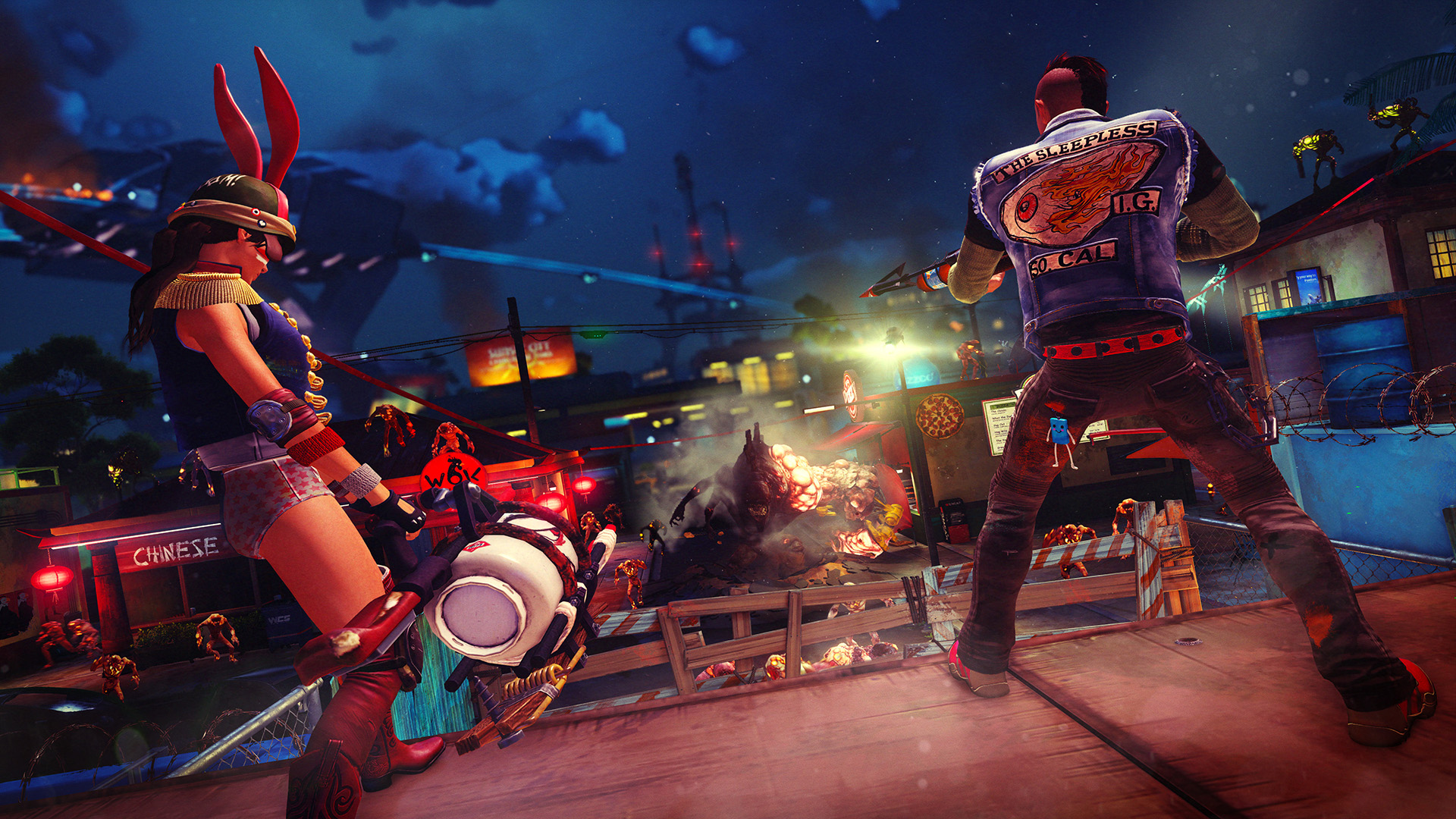
GR: Do they go out on missions with you?
Drew Murray: There are certain missions you do alone, but there are some that you’ll be having to protect them or escort them or they’ll be fighting with you. The amusement park mission which we showed at E3 behind closed doors you’re with the LARPers.
GR: Did the development staff get in the recording studio and do voices?
Ted Price: Some of our scratch dialogue, yeah. We’re headquartered in Burbank and so we have access to a lot of really talented voice actors and we did a lot of casting and pulled in people who are very versatile.
GR: The first interaction between the player and Walter with the flying machine is really funny, and humor is one of the hardest things to do in gaming so what was your number one avenue for that?
Drew Murray: I think a lot of it was dialogue. I think a lot of it came from gameplay. That first year of pre-production we really gave the development team a lot of freedom to the point where Sunset Overdrive doesn’t have a lot of rules in being able to do what I wanted to do. It was just some kooky people on the team. Brian Mathis who has done most of our demos for the game is just a weird dude in the best way possible. In past games he would create these little side elements in Resistance 3 that we ended up saying “we don’t have time to make that good," though Sunset Overdrive was the perfect avenue for the team. If it’s fun, we’ll get it in the game.
GR: I love when developers don’t really shy away from that mentality because it ends up becoming a snowball effect. In developing the game both as a campaign and something you know people are going to play together how do you continue to ramp that up towards the finale?
Drew Murray: Part of it is just continuing to roll out things that are fresh. You’ll add a new move, a new weapon, huge vanity customizations that you can unlock, different groups that should appear along the way. Each major area has its own group. There are a lot of different enemies. Behaviors start changing in quests and challenges.
Ted Price: We understand that, the need to pull people through the game, to have players be excited about what’s around the next corner, and we have a lot of experience in doing that in linear games where that is the "end all, be all" and we took that approach with an open-world game and it’s helped a lot. We come from that mentality that we make sure we’re not creating that repetition even though you might be playing significantly longer in this game than many others.
Drew Murray: I think a lot of open-world games introduce a couple of mechanics and you’re kind of doing the same thing over and over. Our missions and even in our quests we tell the designers to surprise us with a theme and a mechanic. Try to have something unique in each mission and keep it fresh.
GR: As soon as you look at the game you see this incredible visual style and I don’t have a lot of experience with the Ratchet and Clank series, but I loved the commercials where they’d test the crazy weapons you created in the backyard in a home movie. Do you make games from a certain point and develop outward or do you identify elements you know you want in there?
Ted Price: I recall Drew and Marcus presented a very strong theme and tone when they came up with the concept for the game and started evangelizing it within Insomniac. What got all of us hooked is that it’s a game with a very different style and different tone than what other games are out there today and for us as a studio our goal is to be different even though we’d done grounded realistic games and where we thrive is we break the rules, we lift the restraints. What Drew and Marcus presented was almost a directive to break the rules and ignore constraints, do something that surprises people driven by this theme and tone.
Drew Murray: I think like, Marcus and I and a lot of people at Insomniac are there because we love Spyro, we love Ratchet or both and a lot of us see this as the spiritual successor to those games.
GR: One thing I’ve heard is, for example, the Simpsons animators have said that details like a door bending when Homer slams it needed to be removed in order to ground the series in reality. Is that happening in Sunset Overdrive where you say to yourself “this doesn’t look realistic”?
Drew Murray: Not really. We pretty much work with gameplay first and what feels good and then animate to that. There are times that those things get blurred from a purely gameplay standpoint so that when you kill one of the big enemies I want it to die so that the player knows it’s dead. Generally we put the gameplay first and animate to that and we built the traversal system and kind of had to restart with the city and once we figured out the metrics of the traversal we built the city around that.
GR: The soundtrack doesn’t sound licensed…
Drew Murray: It’s mostly not licensed. It’s actually a number of different garage brands with tracks specifically for Sunset Overdrive.
Ted Price: My favorite was the Bronx. Easy Death Rays. (I may have caught this wrong)
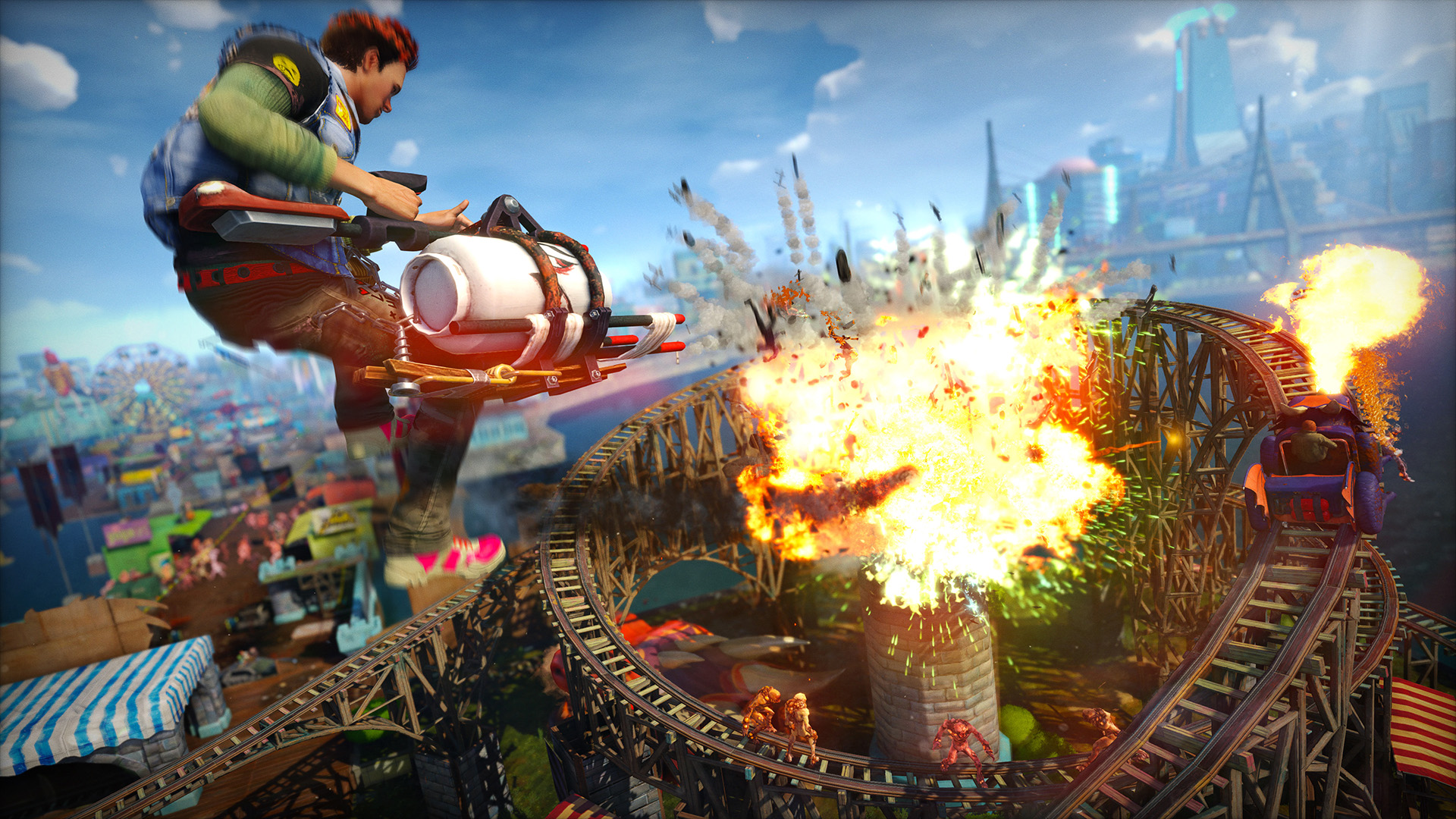
GR: So a lot of local sounds?
Ted Price: Well yeah, not necessarily local to LA but it has that sort of vibe. We looked to a garage, independent vibe to match the game.
GR: Is there anything else people should know about the game?
Ted Price: Chaos Squad is a big element of the game, it’s the co-operative experience where you’re playing through the same city with seven friends and it is "co-petitive." There’s a score and you’re all working towards a final night defense. You got to see one of the night defenses today and we amp it up to eight people, and if you win night defense, you actually earn overcharge, cash, vanity, amps…
Drew Murray: And you can earn amps through upgrades. We have level 1 amps and level 2 amps and most of the level 2 amps are in chaos squad.
Ted Price: You bring those rewards back with you.
Drew Murray: And you are the same character so your progression goes back and forth, you look the same, if you upgrade a weapon in the campaign it goes over upgraded into the chaos squad.
Ted Price: As you’re playing through Chaos Squad missions, there are multiple missions you go on with your friends and you get to vote with your friends which mission you take on so you can decide to earn better bonuses for your team which will help you win night defense or you can vote to increase the chaos level so night defense gets harder but the rewards you get will be better.
GR: Is there a definitive progression, like am I going to miss any weapons in the game?
Ted Price: You can always buy and the thing that I like the most actually is buying weapons, but then earning amps as well and mixing and matching my amps because there’s a huge number of amps in the game, and you can apply the weapon amps to any of the weapons to get some pretty unique combinations the further you get.
GR: The game looks like this crazy neon splatter art house experiment.
Drew Murray: A lot of it is experimentation. A lot of it is Insomniac’s history in the Ratchet and Clank worlds which had an incredible vibrancy and beauty to them. We wanted it to be a really inviting world and we’re trying to turn the apocalypse on its head and everyone thinks the apocalypse is barren and dark and we wanted this to be the awesome-pocalypse like a carnival.
GR: Thank you for taking the time to speak with us!
